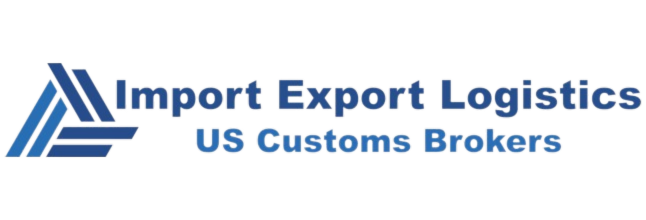
Some FTAs are between the U.S. and just one nation, such as the Korea FTA. Other FTAs include several countries, such as the USMCA, which includes the U.S., Canada and Mexico.
The CAFTA-DR includes the U.S., Costa Rica, El Salvador, Guatemala, Honduras, Nicaragua and the Dominican Republic.
When shipping your goods to one of the FTA or TPA countries, it is sometimes required but always helpful to provide a document, such as a certificate of origin, showing that your goods qualify for the reduced tariffs offered by the FTA or TPA.
Shipping Solutions includes a Certificate of Origin for most of the United States’ Free Trade Agreements. Take a look at this short video to see how Shipping Solutions software makes it easy to complete a USMCA Certificate of Origin in English, French or Spanish as well as Certificates of Origin for the Australia FTA, CAFTA-DR FTA, Chile FTA, Colombia TPA, Japan FTA, Korea FTA, Panama TPA, Peru TPA and Singapore FTA.
This video walks you through the steps you need to take to create these documents and then print them out on plain paper, save them as PDF files or email them to your customer.
Video Transcript
Welcome to Shipping Solutions export documentation and compliance software.
The United States has entered into free trade agreements with about 20 countries. These agreements allow U.S. products that qualify to be sold into those countries duty-free or at substantially reduced duty rates. As an exporter, that means your products may be cheaper and more competitive to sell in those countries.
In order to take advantage of those free trade agreements, the importer must prove that the goods meet the rules of origin for the agreement, and they typically use a certificate of origin provided by the exporter or manufacturer of the goods to do that.
So you can quickly create a properly completed certificate, Shipping Solutions software provides a place to store the required information about your products on the Databases tab, Products screen. This is where you can store all your products, and this screen shows my Prod-1 or Kite String.
When I click on the Free Trade Agreements tab for this product, I see a grid where I can store the Origin Criteria and other information needed for Free Trade Agreement Certificates of Origin. I can store different information for each FTA.
Click the FTA where you want to store the data, so I’ll click USMCA. I select the correct criteria for this product. I’m going to select Criterion 3, and the description for this criterion is shown below. Net Cost and Producer are grayed out because they don’t apply to this FTA. Then I will fill in my FTA Country of Origin.
You can also upload this information in bulk if you have it in a spreadsheet. Now let’s go create our shipment on the EZ Start Screen.
Click New and then click Contacts and enter your Exporter information. Next, enter your Customer or Ultimate Consignee. You must enter your customer so that Shipping Solutions knows what FTA applies to this shipment.
Next, click Product Detail and enter the line items for your shipment. I’m going to add Prod-1 that we looked at earlier. The Product Description and Schedule B/HTS Code fields will appear on the USMCA document. In addition to the data in the Free Trade Agreements section of the screen. Based on the country of your Ultimate Consignee, which is Canada, the USMCA criteria will be displayed in the appropriate data fields. Save and Close.
If this is not a blanket USMCA, enter the Invoice Number on the Invoices-Proforma/Commercial screen.
Click the Free Trade Agreements screen. Here we enter the Importer, Producer and Certified By contacts. In the USMCA Certified By drop-down list, choose whether the importer, exporter or producer is certifying that the goods qualify under the USMCA.
Enter the date of the USMCA certificate in the FTA Date field. If this is a blanket certificate, enter the Blanket From/To dates. A blanket certificate can be issued for up to one year so that you don’t have to provide a certificate with every shipment. Save and Close.
Now, back on the EZ Start tab, click the Preview/Print/Email button. Shipping Solutions provides four different USMCA Certifications of Origin. U.S. exporters will want to use the standard USMCA document, which looks like this.
We also have a Canadian version of the USMCA in both English and French and a Spanish-language version for Mexico. You can preview and print your USMCA certificate, or you can print to PDF and email the documents.
We also have 9 other Free Trade Agreement Certificates of Origin. I have filtered my document list to only show FTAs, so you can see which ones we offer.
Let’s create one more: The Japan FTA Certificate of Origin. So, I’ll copy the shipment we just did, except I’m not going to copy the line items. On the Contacts screen, I’ll change my customer to one in Japan. When I enter my line item for this shipment, the correct FTA criteria comes through for Japan. We will also need to change our Importer. Then we can view the Japan FTA Certificate of Origin.
If you want to modify some of the field labels on the USMCA or other FTAs, go to the Tools tab, Customize Documents tree and pull up the screen for the document you are working on, and I’ll pick the USMCA. Click here to modify field labels. There are other options you can change as well.
For more information, visit our website, www.shippingsolutions.com. Thank you for watching.
Like what you read? Join thousands of exporters and importers who subscribe to Passages: The International Trade Blog. You’ll get the latest news and tips for exporters and importers delivered right to your inbox.
